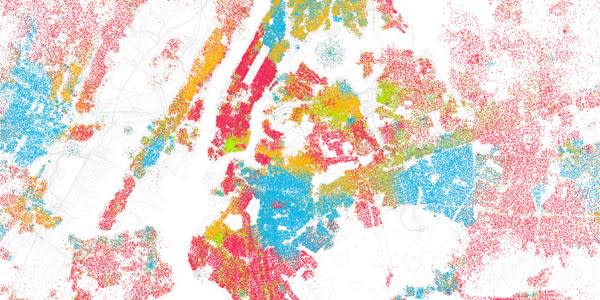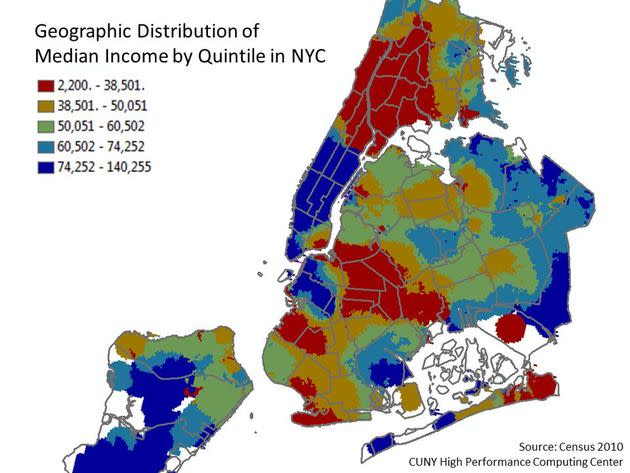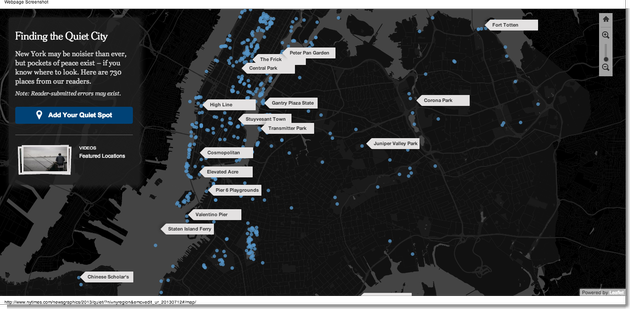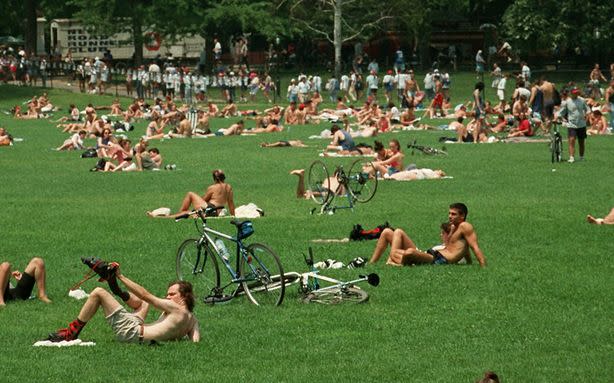Is Silence a Luxury for White People?
This morning, a story in The New York Times highlighted one of those city problems that is so prevalent, you sometimes don't think much about it: noise. As reporter Cara Buckley writes, the city has actually gotten louder, with helicopters jetting to the Hamptons, incessant construction and those weird new squad car sirens:
Noise has become harder than ever to escape, though New York City, now in its second century of noise abatement efforts, has managed to quiet some offenders of the past, like boom boxes and car alarms. Interviews with residents in affected areas, officials, soundproofing professionals and audio experts not only confirm the creep in round-the-clock outside noise, but suggest that its potential ill effects can rival those caused by deliberately manipulated, high-decibel assaults inside stores, clubs and restaurants. Some contend that the city, despite its efforts, has shown a distinct reluctance to crack down on certain offenders, like construction companies, especially in recent years.
She proceeds to relay tales of New Yorkers spending thousands of dollars on soundproofing, making ceaseless complaints to City Hall — and, often, failing to find the silent refuge they so desperately seek.
RELATED: Highlights of 'The Final Edition,' a New Parody of the New York Times
Accompanying the story is an excellent interactive feature called "Finding Quiet In the City" that allows readers to submit where they go to escape all the noise. Of particular interest is the map that accompanies this feature, on which readers have "pinned" those beloved silent places:
RELATED: The Huffington Post Passes The New York Times in Traffic
RELATED: It's Not a New York Times Trend Until Jon Hamm Says So
Somewhat curiously, these recommendations of silent places are in line with the distribution of wealth across the five boroughs (via Queens College)
RELATED: The New York Times is Cancelling Most Podcasts
RELATED: Why Gail Collins's Crate-Gate Crusade Won't Die
I don't think I will be breaking any news by further correlating the above two metrics with race (on the map below, by Eric Fischer, red means white)
Of course, the fact that the quiet-place suggestions are mostly in wealthier white neighborhoods may be a reflection of nothing more than The Times's readership, which skews towards Manhattan and brownstone Brooklyn. But, frankly, so does the demographic capable of purchasing $400 Bose headphones to drown out noise or soundproof walls. Even the social capital required to make persistent complaints to city officials — and to have those complains actually listened to — is often denied to poorer people of color.
The latter simply take noise for granted, whether it's police sirens or landing airplanes or people loitering late into the evening. The construction projects Buckley describes are not, for the most part, going up in East New York or the South Bronx. There, you live with dust and noise. And, often, worse.
Photo via Associated Press.




